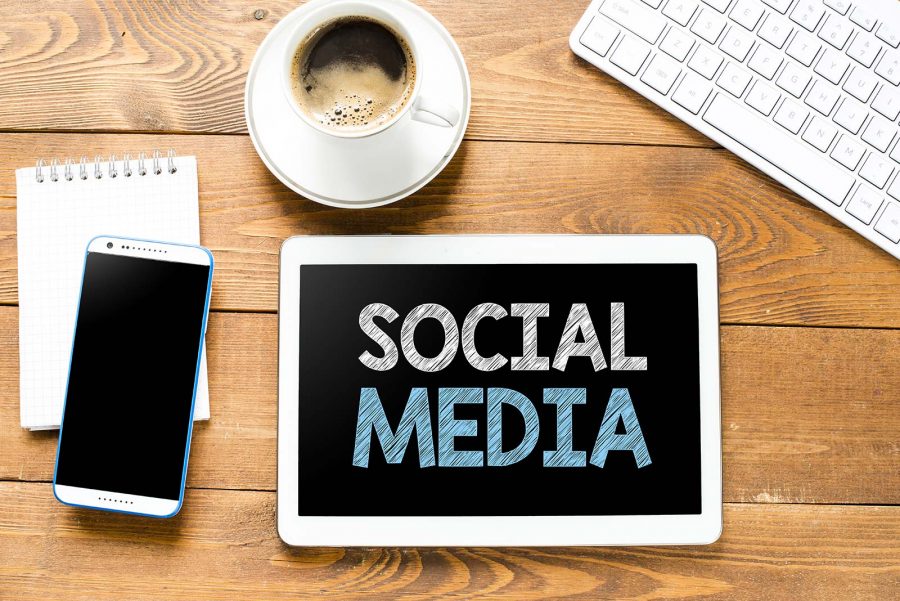Social Media Marketing for Photographers: What’s the Best Platform?

Social media is a powerful tool for all photographers. If you’re looking to get your work seen, then nowadays you have almost no choice but to utilise social media to your advantage. If you’ve read any of my posts that lean more towards the business side of photography before, then you’ll know that I am a big believer in the power of social media. But Facebook isn’t your only choice if you’re trying to market your photos. In fact, there are a number of social media websites that you would need a good excuse not to be on!
In this article we’ll take a look at some of the key social platforms, and how they differ in the results they can produce for you as a photographer.
Who Should Use Social Media?
The word ‘marketing’ strikes fear in the hearts of many media professionals. It’s a potential bottomless pit for pouring your time and money, with no guarantee of success. Even huge media campaigns running into the hundreds of thousands of pounds, if not more, can be complete failures. But marketing covers everything from big budget TV advertisements to setting up a social media page and publishing your photos online.
You don’t need to be a professional photographer to present yourself online as a ‘proper’ photographer. In fact, you don’t even need to want to make money from your images. I recommend that everyone, from amateur to professional, builds up a social media presence. It brings the clear advantage of allowing you to get your work noticed, and who doesn’t want that? We love to share our work, and across the world we view millions of photos every day.
So, hopefully you’re starting to realise that if you aren’t on social media already, then you really should be! I’ve made social media a big part of my photography business since day one, and I have had great successes from doing so (both with networking and monetising my work). But which are the best platforms?
I can’t really start a social media article without addressing Facebook first. With almost 1.4 billion people registered on Facebook to date, it’s a platform you really can’t ignore. Despite previous social media platforms like MySpace and Bebo disappearing relatively quickly, Facebook is clearly here to stay. It’s managed to become a significant part of businesses all over the world, whilst simultaneously keeping distant friends and relatives in contact. I rarely send SMS messages on my mobile anymore; instead I use Facebook Messenger. I’m certainly not alone in this, and with Facebook becoming a huge part of people’s lives, it is the first place you should turn to as a photographer looking to stand out from the crowd.

So what is it good for? Facebook is definitely not the place to go if you’re wanting to network with other professionals. There are just so many people interacting on Facebook Pages, and there’s no real way of making casual introductions with others. However, it is the best way to keep in contact with your ‘fans’, showing them what you are up to and your latest photos. You can set up a Facebook Page relatively easily, and it is of course free. Just have a read of our tutorial that looks at how you can start your own Page.
My own Facebook Page, having been running for a number of years now, has over 55,000 Likes – a number I have achieved through both organic growth and advertising campaigns. However, I am no master of Facebook wizardry; that title is handed to Will Burrard-Lucas, who boasts almost 1 million Likes and now has an extremely popular Page. He is a real boffin when it comes to effective marketing on social media, and subsequently is a very well known photographer through his efforts running regular caption contests and interacting with his fans.
But through the nature of social media and its ability for users to share content and cause it to go viral, Facebook is a fantastic way to have your work noticed. But you don’t stop at just running your Page, oh no. In fact, you can join a number of Facebook groups dedicated to photography, allowing you to share your images with other similar minded people. If you haven’t already, make sure you have joined the Nature TTL community group on Facebook, where you can chat with other readers.
Don’t forget about your personal Facebook profile too. You can share your images there as well as on your professional Page, providing you with an opportunity to get more personal responses from people you know already.
I love it. When I first joined Twitter in 2009, I posted a few tweets (messages) and soon thought “what’s the point” and abandoned my account. I couldn’t understand why anyone would want to share endless statuses, capped at 140 characters, when you could use Facebook without limitations. However, I picked up the platform again a few years later and now I’ve fallen in love with it.

It’s the most useful tool for networking I’ve found so far. It is not seen as odd to strike up conversations and respond to tweets by people you don’t know. In fact, that’s exactly what the network flourishes on. Consequently, you have a unique opportunity to network and get to know other professionals.
It’s not really a photo sharing platform, although you can add photos to your tweets. Sometimes things go viral like this, but with tweets posted so regularly by everyone, you’re unlikely to build up a following this way. Instead, engaging and chatting with others is the way to do it. Having now used Twitter properly for a number of years, I can safely say that it has been well worth the time and effort. I’ve met countless people from the wildlife photography industry, and in fact without Twitter I highly doubt you’d be reading this article, and Nature TTL would probably not exist. It’s because of the fact I have met so many great photographers through Twitter that I’ve been able to pull together a great team of writers and develop Nature TTL into the resource it is today.
Feel free to head over and tweet either myself, @WRNicholls, or Nature TTL, @NatureTTL, on the platform and see what it is all about. Again, like most social media platforms, Twitter is free to use.
Now owned by Facebook, Instagram is a mobile application and social media platform that has had a rocky relationship with photographers. Whilst some have found incredible success sharing photos on Instagram, until recently your photos were restricted to square crops when published. Originally, Instagram encouraged the uploading of photos taken on your mobile, whereas now they allow any aspect ratio of image to be uploaded. This has caused more photographers to post photos taken on DSLR cameras, as they don’t need to crop, increasing the overall quality of work found on the app.
I prefer it this way, as Instagram used to be filled only with photos of your friends’ lunches. Whilst there are definitely food pictures still appearing in my feed, they are interspaced with beautiful imagery that wasn’t there before in its former years. I have joined Instagram myself, @willnphoto, although I find that I am guilty of not posting regularly.
The key to success on Instagram is regular postings, perhaps every other day. You can utilise relevant hashtags to push your photos into the feeds of others and gain new followers. It’s a relatively simple platform to build a following on, but it requires some dedication to the cause. @calsnape, who has written a number of articles for Nature TTL, is a perfect example of how Instagram can be used to great effect. Callum has almost 500,000 followers on Instagram and has had countless opportunities sprout from his presence on the app.
Instagram has recently announced the pending launch of business profiles, just like Facebook Pages, to the platform. This will be interesting to watch and see how it develops. Hopefully it doesn’t follow the pattern of Facebook in squeezing every last penny from professionals using the platform, but I can’t say I’d be surprised since it is owned by Facebook.
A new one for me, LinkedIn is a social media platform for business professionals. It’s full of people from all walks of life, and it is a good place to network. It’s essentially an online CV, with potential of lining you up with a job and contacts in the relevant industries.

Initially a platform I abandoned due to the onslaught of notification emails I was sent (although this is no longer the case), I have decided to give it another shot. I’m much more of a fan the second time round, and have already met a few people through the website. It doesn’t require much effort, and I don’t post there regularly at all. In fact, there is no real need to post, like you need to with the other options. Your profile remains discoverable by other professionals based on your skills and attributes, and you can connect with others as you see fit.
You can view my page and see how I am using the LinkedIn social media platform myself. If you’re on LinkedIn already, then please feel free to send me a connection request – after all, social media is about networking and meeting new people.
In Conclusion
These are the main players when it comes to social media. Facebook, Twitter, Instagram and LinkedIn; they all have their own special place, achieving slightly different things to each other. Clearly I would encourage you to build a presence for you and your photography on social media, and I would suggest you start with Facebook. But don’t stop there! Make sure to join at least Twitter as well, and explore the other options you have in the future.
Social media does require attention and it does demand some of your time. You need to put in effort to achieve results, but they are worth it in the long run if you want to get your work noticed and develop a name for yourself as a photographer.







